AI and the Metaverse
Artificial Intelligence (AI) and the Metaverse are emerging as two of the most prominent technology trends today, promising to reshape the way people work, play, and connect. AI brings analytics, personalization, and automation, while the Metaverse opens up a multidimensional interactive virtual world. The combination of AI and the Metaverse not only enhances the user experience but also creates breakthrough opportunities for businesses, education, healthcare, and many other fields. Understanding the role of AI in the Metaverse will help us better grasp the potential of the new digital era.
The Convergence of AI and the Metaverse
AI and the Metaverse are two of the most transformative tech trends converging today. The metaverse is often described as a network of immersive virtual worlds where people interact using avatars and technologies like virtual reality (VR) and augmented reality (AR).
However, without AI, this vision of a rich, dynamic metaverse would remain "a static shell" lacking the intelligence and adaptability that make it truly transformative.
AI is the engine that can bring these virtual worlds to life – enabling them to learn, adapt, and personalize experiences in real time.
AI algorithms work behind the scenes in metaverse environments, generating responsive virtual worlds and characters.
Generative AI technologies have advanced rapidly in recent years, and their integration with the metaverse is unlocking dynamic virtual experiences.
Instead of designers hand-crafting every asset, AI can autonomously create content – from 3D objects and landscapes to dialogue and music – that adapts and responds to users' actions.
This means virtual worlds can be personalized for each user and evolve based on interactions, pushing the boundaries of what's possible in a digital realm.
Industry leaders are enthusiastic about this synergy; they see generative AI scaling up metaverse development by easily generating unique content, not just for big studios but even for everyday creators.
AI will have a fundamentally transformative impact on almost everything we do, and the applications of AI in the metaverse will help us to better understand challenges, facilitate deeper collaboration, and generate greater impact for the global community.
— Professor Klaus Schwab, World Economic Forum
In short, AI is set to supercharge the metaverse's growth and capabilities, while also presenting new challenges to navigate.
Understanding the Metaverse
The metaverse is a collective virtual universe – a blend of persistent online worlds, augmented realities, and rich 3D spaces. At its core, the metaverse can be seen as an immersive extension of the internet, where users move through virtual environments for socializing, work, learning, and play. Rather than a single platform, it's a digital ecosystem comprising many platforms and experiences.
Meta's Horizon Worlds
Decentraland
Roblox
Other players range from gaming giants (e.g. Epic Games hosting virtual concerts in Fortnite) to emerging virtual communities like South Korea's Zepeto, and even enterprise platforms like Microsoft Mesh for workplace meetings. This thriving but fragmented landscape is collectively referred to as the metaverse.
While early hype was sky-high, progress has been steady if a bit slower than initial forecasts.
Still, as of 2025 the metaverse economy is valued in the hundreds of billions of dollars and growing, with continual improvements in VR/AR hardware and network speeds making access easier.
Crucially, AI is woven into the very fabric of this ecosystem – powering the advanced interactions and content that make the metaverse much more than just 3D graphics. In the following sections, we explore how AI is transforming the metaverse experience.
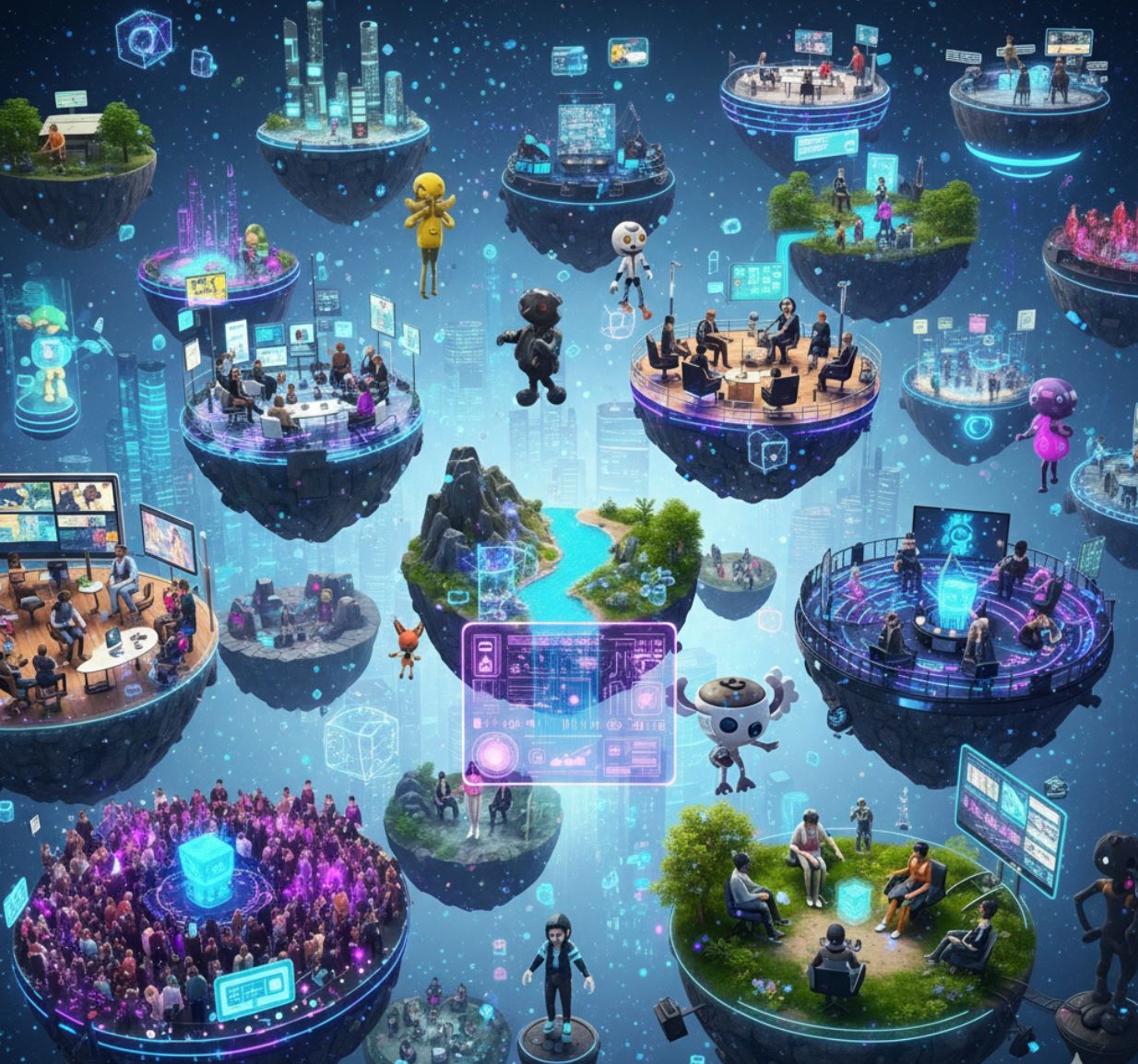
How AI Is Transforming the Metaverse
AI technologies provide the "brain" of the metaverse, enabling worlds to feel alive, interactive, and tailored to each user. Here are some of the key ways in which AI is powering and shaping the metaverse:
Smarter Avatars & Personalization
AI-driven avatars can mimic realistic facial expressions, body language, and speech, giving users a deeper sense of presence and emotion in virtual meetings or hangouts.
- Advanced computer vision tracks user movements and gestures in real time
- Natural eye contact and hand motions mirrored by avatars
- Real-time personalization of virtual environments
- Tailored content based on preferences and past behavior
Beyond avatars themselves, AI personalizes the world around each user – for instance, when you enter a virtual shopping mall or theme park, AI algorithms can tailor what you see (products, content, etc.) to match your preferences and past behavior.
This kind of real-time personalization encourages people to stay engaged longer and makes the experience feel uniquely their own.
Generative Worlds & Content Creation
AI is fundamentally changing how metaverse content is produced. Instead of developers manually crafting every object or environment, procedural generation techniques let AI models create vast landscapes, cities, buildings, and even entire planets on the fly.
Time Efficiency
Dramatically reduces time to build rich virtual worlds
Cost Reduction
Enables smaller creators to compete with industry giants
This dramatically reduces the time and cost to build out rich virtual worlds, and it even enables smaller creators to compete with industry giants in terms of content diversity. Generative AI can also infuse storytelling into environments – for example, algorithms can populate a game world with unique quests or adjust the narrative based on a player's actions.
The result is dynamic worlds that evolve and respond to users. As one industry expert explained, combining generative AI with the metaverse yields dynamic virtual environments where content adapts to users' interactions, enabling personalized and ever-changing experiences.
Intelligent NPCs and Virtual Assistants
The metaverse is populated not just by human-controlled avatars but also by AI-controlled characters. These non-player characters (NPCs), powered by AI, can engage users in realistic conversations or activities and react contextually to what's happening.
- Virtual shopkeepers and guides with natural conversation abilities
- NPCs leveraging advanced language models for human-like interactions
- Personal AI assistants for navigation and task assistance
- Live language translation capabilities
In a virtual campus or game, for instance, an NPC shopkeeper or guide can understand and respond to user inquiries naturally. Some NPCs now leverage advanced language models, making them virtually indistinguishable from human players in social interactions.
Beyond NPCs, personal AI assistants are emerging in AR/VR settings – think of a virtual guide who can accompany you through a digital world, help with tasks, or even provide live language translation.
Natural Language Interaction
AI's advances in Natural Language Processing (NLP) are breaking down communication barriers in the metaverse.
Language Barriers
- Limited to same-language users
- Manual translation required
- Reduced global participation
Global Communication
- Real-time speech translation
- Seamless cross-language interaction
- Truly global virtual communities
Language translation algorithms allow people from different countries to talk or text in VR seamlessly – your speech can be translated in real time into another language so that all participants hear/see it in their native tongue.
This real-time translation fosters truly global communities in virtual spaces, where language differences no longer limit who you can socialize or collaborate with. Additionally, NLP powers conversational chatbots and virtual customer service reps inside metaverse platforms.
Safety, Security & Moderation
Just as in today's internet, maintaining safe and healthy communities in the metaverse is a major concern. AI plays a pivotal role in moderating content and behavior at the massive scale these virtual worlds entail.
Content Detection
Automatic detection of harassment, hate speech, and policy violations
- Text and voice chat monitoring
- Inappropriate imagery recognition
- Biometric signal analysis
Privacy Protection
Advanced techniques to protect user identities and data
- Differential privacy implementation
- Data encryption protocols
- Anonymous interaction options
Machine learning systems can automatically detect harassment, hate speech, or other policy violations in text or voice chats and take action to prevent harm.
Computer vision can recognize inappropriate imagery or even monitor biometric signals (like unusual motion patterns) to flag potential bad actors. By detecting and mitigating threats, AI helps ensure virtual spaces remain secure and user-friendly.
In short, AI technologies – from machine learning and NLP to computer vision and generative models – act as the intelligence layer of the metaverse. They enable virtual worlds to be interactive, personalized, and scalable in ways that wouldn't be possible with manual content creation or human moderation alone.
The next sections will look at how this AI-metaverse convergence is being applied across various domains, and what new possibilities (and challenges) are emerging as a result.
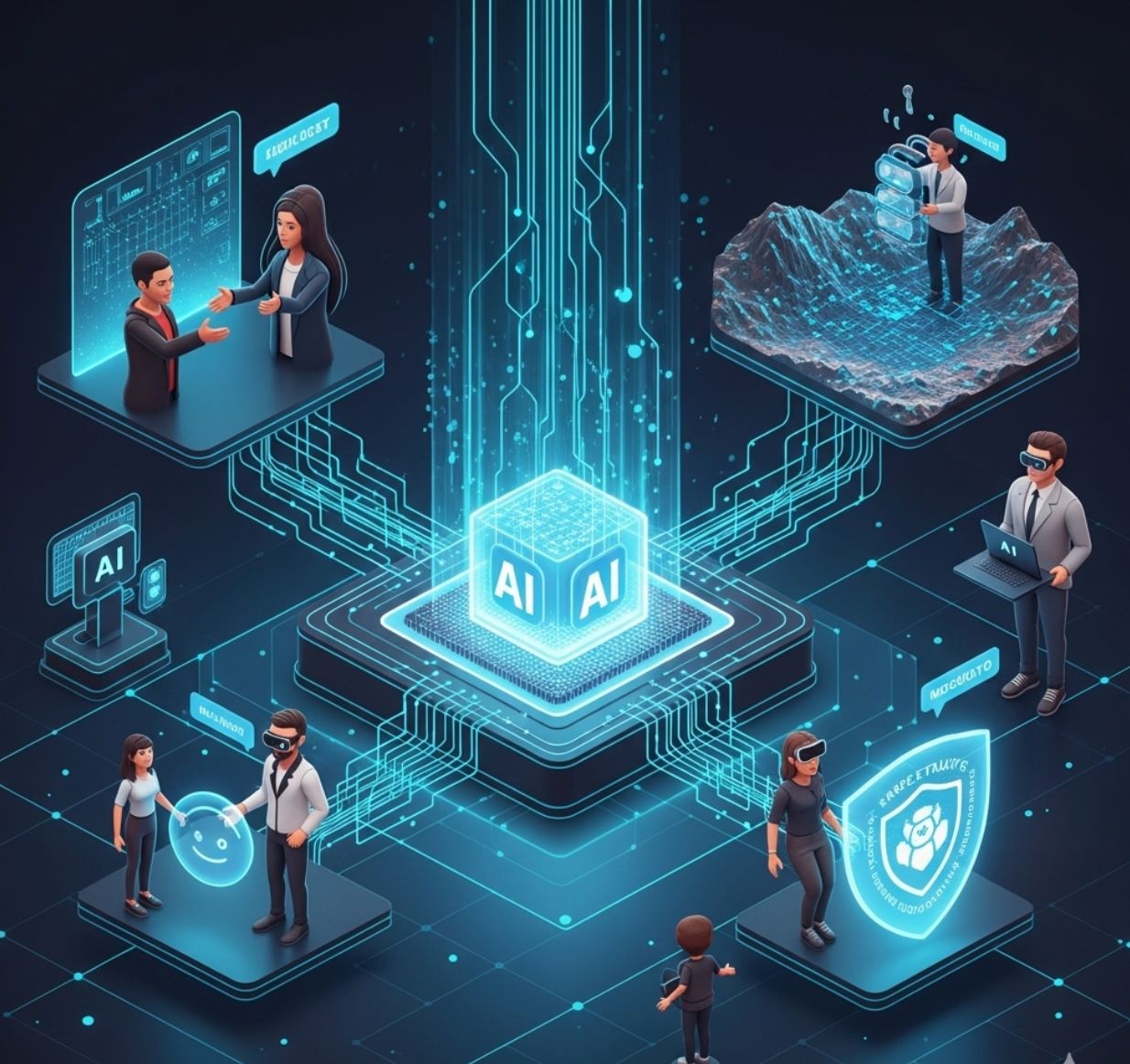
Real-World Applications Across Industries
The fusion of AI and the metaverse is already evident in a wide range of practical applications. Various industries are leveraging these technologies to reimagine how we socialize, work, learn, and conduct business in virtual environments. Below are some key sectors and examples:
Business and Work Collaboration
Companies are embracing the metaverse as a virtual workspace and innovation platform. Instead of travel and physical offices, teams can meet as avatars in immersive conference rooms, brainstorm with digital whiteboards, or walk through 3D product models together.
These virtual workspaces reduce the need for costly real-world offices and enable global teams to collaborate as if in the same room.
They even held TED Talk-style presentations on a simulated moon base to engage their workforce – experiences that are far more memorable than a standard video call. Beyond meetings, businesses use metaverse simulations for training and prototyping.
- Interactive training scenarios for complex tasks
- Safe practice environments with AI-driven feedback
- Infinite retries for skill development
- Emergency response drill simulations
Such simulations are already standard in industries like manufacturing and healthcare. AI further amplifies workplace efficiency by enabling generative design: HPE's researchers, for example, are experimenting with generative AI to instantly create 3D models and environments via voice commands.
This means an employee could simply say what scenario or object they need, and the AI will generate it on the spot in the virtual world – dramatically speeding up design and problem-solving. Overall, the AI-powered metaverse is poised to transform remote collaboration, making it more interactive and productive than ever before.
Education and Training
Education is being revolutionized by immersive technology, with AI playing a key role in customizing learning experiences. Virtual classrooms can transport students to historical sites or inside the human bloodstream, enabling interactive lessons that would be impossible in a traditional class.
Virtual Field Trips
Transport students to any location or time period for immersive learning
Science Simulations
Bring abstract concepts to life in interactive 3D environments
Teachers are using metaverse platforms for virtual field trips and science simulations, bringing abstract concepts to life in 3D. AI adapts these educational environments to different learning paces – for example, by adjusting difficulty or providing personalized tutoring via a virtual assistant.
Beyond schools, professional training and skill development have greatly benefited: surgeons and pilots can practice high-stakes procedures in realistic VR simulations guided by AI.
In these safe virtual settings, a surgical resident might rehearse a complex operation on an AI-driven virtual patient that bleeds and reacts like a real human, or a pilot could train for emergency scenarios with AI-generated challenges. Such practice, done repeatedly, reduces real-world risks while boosting expertise.
Even outside formal training programs, people are using metaverse scenarios to learn by doing – whether it's a new employee onboarding in a virtual office or an engineering team visualizing a 3D blueprint together. AI personalizes the feedback in these simulations, identifying areas to improve and adjusting the scenario difficulty accordingly.
Entertainment and Social Experiences
The metaverse got its start in entertainment, and that remains one of its most vibrant areas – now supercharged by AI. Video games and virtual worlds are increasingly populated with AI-driven characters and stories that respond to player actions, providing a unique experience for each user.
Major concerts and events have moved into virtual venues: games like Fortnite have hosted blockbuster virtual concerts (with millions of attendees) that blend gameplay and live music. In these events, generative AI can be used to create spectacular visual effects or even adjust the music playlist in response to audience feedback in real time.
Social platforms in the metaverse allow friends or colleagues to hang out in a virtual café, attend a comedy show, or explore a fantasy landscape together – all through avatars.
AI ensures these experiences remain engaging by, for example, dynamically adjusting the environment (lighting, weather, crowd noise) to suit the mood or scale of an event. It also helps moderate live events by filtering abusive chat or ensuring avatars behave within acceptable norms, which is crucial when thousands of people interact in real time.
As Anadol describes, AI allows creators to bring to life things that previously existed only in imagination or dreams – for example, an ever-evolving virtual sculpture that changes based on the emotions of the audience.
In short, AI is expanding the possibilities of fun, art, and social connection in the metaverse, from hyper-personalized video games to global cultural events that anyone can join.
Retail and Virtual Commerce
Commerce has found a new frontier in the metaverse. Retail brands are setting up virtual storefronts where you can browse and purchase products as 3D models, often for direct use by your avatar. Everything from designer clothing and accessories for avatars to virtual real estate and furniture can be bought and sold.
2D Shopping
- Static product images
- Text-based recommendations
- Limited interaction
3D Interactive Shopping
- Try-on experiences with avatars
- AI-powered personalized showrooms
- Immersive product demonstrations
AI plays a pivotal role behind the scenes: it can analyze your style preferences and recommend items in a virtual shop, just as recommendation engines do in online stores – but now in an interactive 3D showroom. For instance, if your avatar tries on a virtual jacket, AI might suggest matching shoes or a hat, creating a personalized shopping experience.
This mirrors the "you might also like" feature of e-commerce, elevated into an immersive encounter. Some brands are even releasing AI-designed virtual fashion that adapts to trends or user input, meaning your digital outfit could be one-of-a-kind.
Beyond goods for avatars, companies use metaverse spaces for marketing real-world products in engaging ways. We've seen fast-food chains like McDonald's experiment with virtual pop-up restaurants in the metaverse, where AI avatars might greet users and offer special promotions.
The entertainment factor draws people in, and the AI ensures each visitor gets relevant information or deals. Another aspect of metaverse commerce is the use of NFTs (non-fungible tokens) and blockchain to provide verifiable digital ownership of items.
While NFTs themselves are enabled by blockchain, AI assists by monitoring transactions for fraud and by dynamically pricing assets based on demand patterns. The result is a burgeoning digital economy where AI helps maintain fair play and security as users trade virtual goods.
Public Services and Society
It's not only private companies and gamers investing in the AI-enabled metaverse – governments and international organizations are exploring its potential for public good. City planners, for example, are building digital twins of real cities in virtual space: accurate, AI-powered simulations of urban environments.
These virtual cities allow planners and AI models to run scenarios (like traffic flow optimizations or disaster response drills) without real-world consequences, informing better decisions for the physical city.
One of its first projects was creating a taxonomy of real-world applications for AI in virtual worlds – from urban planning and education to climate action and public services.
Healthcare
Governance
Cultural Heritage
For example, in healthcare, doctors could use a metaverse clinic to consult with patients remotely, with AI translating between languages or even visualizing a patient's MRI scan in 3D for better explanation.
In governance, local authorities might hold town hall meetings in a virtual auditorium, using AI translation and moderation to include more citizens in the discussion.
Even cultural heritage is being preserved through AI in the metaverse: historical sites and artifacts can be digitized into virtual reality, where AI helps restore missing pieces or animate ancient environments for educational tours.
All these applications hinge on AI's ability to simulate complex systems and personalize experiences, showing that the metaverse (with proper guidance) can serve social and public needs, not just commercial ones.
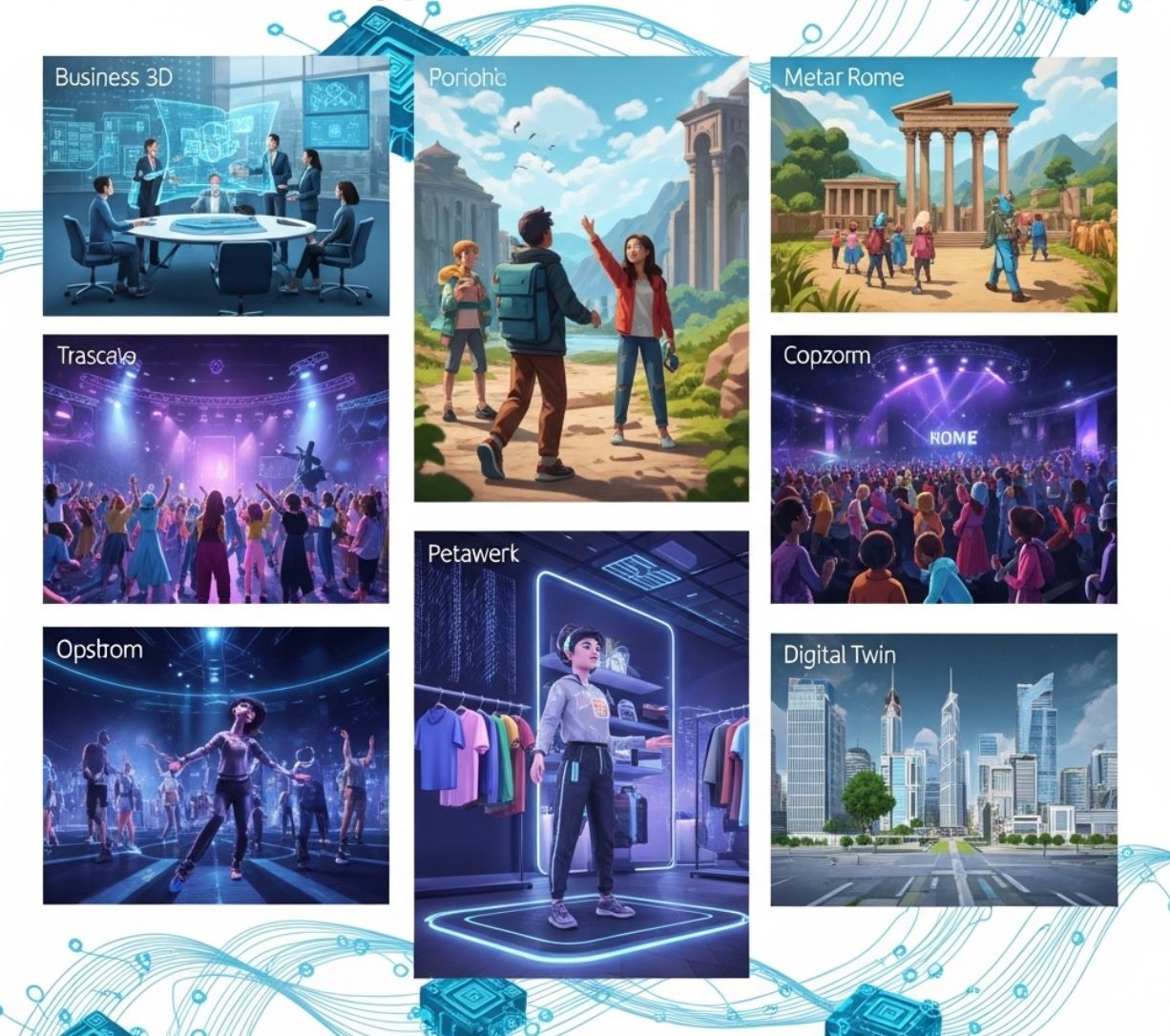
Challenges and Ethical Considerations
While the fusion of AI and the metaverse unlocks exciting possibilities, it also brings significant challenges and ethical questions that society must address:
Privacy and Data Security
Immersive metaverse platforms can collect far more personal data than traditional apps – including biometric information like face scans, eye movements, heart rate, and voice patterns. AI algorithms thrive on data, and in the metaverse they will continuously analyze users' behaviors to personalize experiences.
However, this raises concerns about who owns that data and how it's used. Past experience with social media suggests caution: unchecked data collection led to privacy scandals, and the metaverse could amplify that.
If companies can track not just what you click, but where you look and how you gesture, the potential for intrusive profiling is unprecedented.
- Data encryption and anonymity options
- Clear consent mechanisms
- Privacy-preserving AI techniques
- Strong regulations and user education
Security and Misinformation
The metaverse opens new vectors for fraud, hacking, and misinformation, especially when combined with generative AI.
Deepfakes and AI-generated avatars could be used to impersonate trusted individuals in virtual meetings or spread propaganda through what looks like a real person's testimony.
Cybersecurity is also a concern: everything from virtual property theft (e.g. someone stealing your valuable NFT asset) to identity theft of your avatar needs robust defenses.
- Identity verification systems
- Cross-jurisdictional law enforcement
- Minor safety protections
- AI-powered threat detection
Ethical AI and Bias
AI systems are only as good as the data and design behind them. In the metaverse, biased or poorly designed AI could lead to unsafe or unequal experiences.
For example, if an avatar creation AI has only been trained on certain demographics, it might not accurately represent users of other races or body types. Similarly, AI content filters might inadvertently silence certain cultural expressions if not carefully calibrated.
- Diversifying training data
- Conducting fairness audits
- User transparency and control
- Ethical AI development standards
Interoperability and Control
Another challenge is ensuring no single company monopolizes the AI or the platform aspects of the metaverse.
Right now, many virtual worlds are siloed – you can't easily take your avatar or digital goods from one platform to another.
If one or two corporations control the predominant metaverse realms (and the AI systems within them), they would wield enormous influence over digital life.
AI could actually help by serving as a translation layer between different worlds – for instance, converting assets or avatars from one format to another. But there is also a need for policy intervention to prevent anti-competitive practices.
In summary, building an AI-powered metaverse comes with responsibilities. Privacy, security, ethical use of AI, and open access are all challenges that must be tackled to ensure this next evolution of the internet benefits everyone.
The good news is that these conversations have begun, and even organizations like the United Nations (through the ITU) are bringing stakeholders together to create guidelines for inclusive and trusted virtual worlds.
The hope is that by anticipating risks and setting the right rules, we can avoid repeating the mistakes made during the rise of social media and instead create a metaverse that is innovative and responsible.
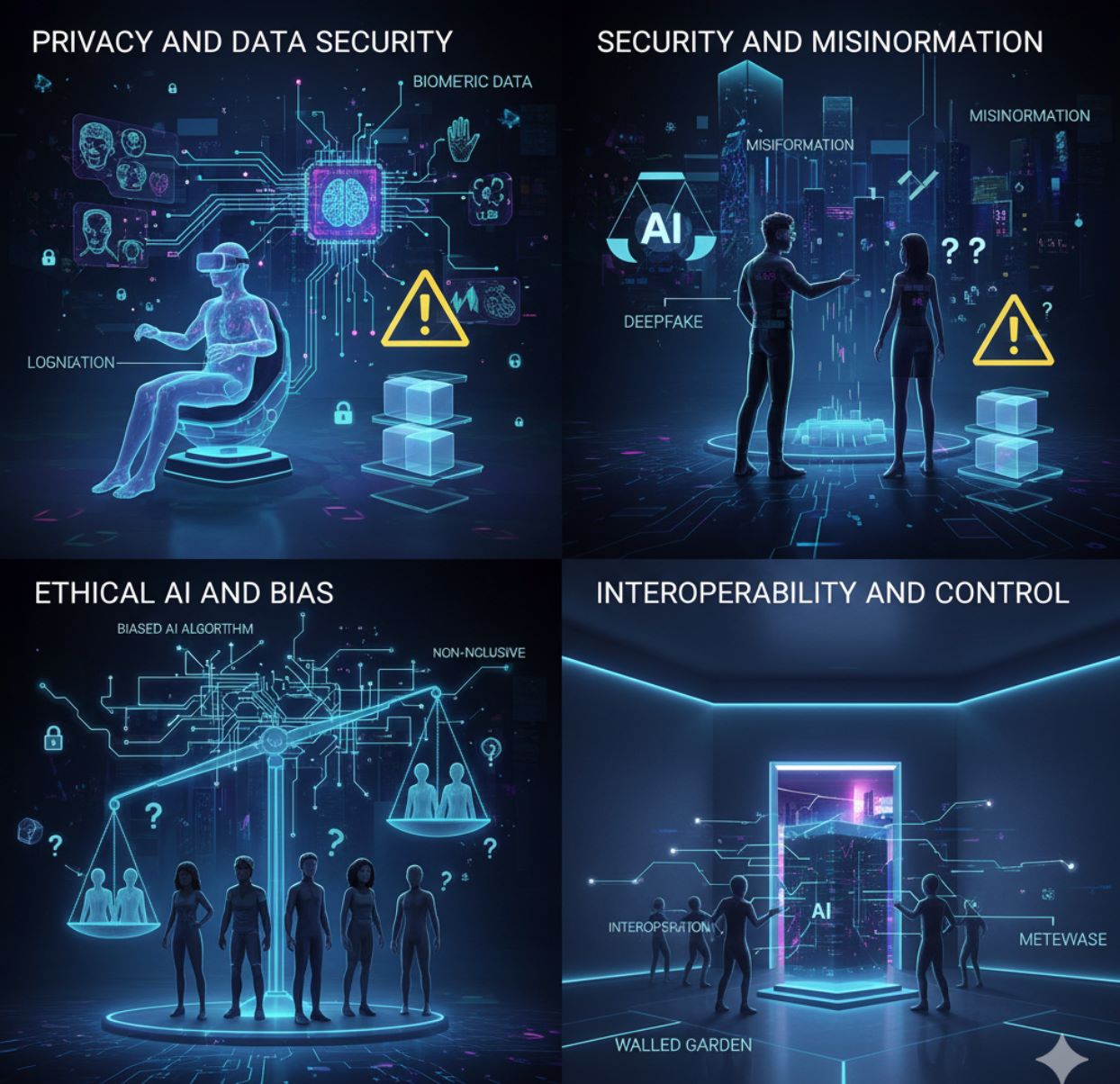
Future Outlook
The convergence of AI and the metaverse is still in its early days, but its trajectory points toward a profound transformation in how we live, work, and play. Tech analysts predict that by 2026, a quarter of the population will spend at least an hour each day in the metaverse for various activities (work, shopping, socializing, etc.).
By the end of this decade, the metaverse could very well become as ubiquitous as today's social media platforms – essentially a 3D extension of the internet that many of us will frequent daily. AI will be the key enabling force that makes this scale and richness possible.
Intelligent Environments
Virtual worlds that change dynamically based on your mood and needs
- Emotion-responsive scenery
- Adaptive lighting and weather
- Personalized ambient experiences
AI Companions
Intelligent assistants that understand your goals and help achieve them
- Goal-oriented assistance
- Emotional intelligence
- Contextual support
Universal Access
Breaking down barriers for full participation regardless of language or ability
- Real-time translation
- Accessibility features
- Inclusive design
On the horizon, we can expect metaverse experiences to become ever more intelligent and lifelike. Continued improvements in AI – from more fluent language models to smarter vision and sensor algorithms – will make virtual environments increasingly responsive to our needs and emotions.
Imagine a future virtual world where the scenery changes dynamically based on your mood, where AI companions understand your goals and help you achieve them, and where language or disability is no barrier to full participation.
We're already seeing the building blocks: cutting-edge AI engines (like image generators and large language models) are being plugged into metaverse platforms to generate high-fidelity textures, realistic physics, and complex dialogues on the fly.
| Technology | Current State | Near Future (2025-2027) | Long-term Vision (2030+) |
|---|---|---|---|
| AR/VR Hardware | Bulky headsets, limited battery | Lighter glasses, improved battery life | Seamless mixed reality |
| AI Processing | Cloud-based AI services | On-device AI chips | Real-time AI everywhere |
| Content Generation | Basic procedural generation | Advanced AI-created worlds | Infinite personalized content |
Tech giants like Meta, Google, Apple, and NVIDIA are pouring R&D into both AR/VR hardware and AI software to push this vision forward. This means the next few years could bring lighter, more AI-infused AR glasses, smarter VR headsets with on-board AI chips, and platforms that seamlessly blend digital and physical worlds (the so-called mixed reality).
If that trust is earned, the metaverse could truly realize its promise as "the next internet" – a place where anyone can create, explore, and connect across distances in a deeply personal way.
The coming together of AI and the metaverse offers a chance to reinvent digital interactions to be more human-centric: more immersive, inclusive, and imaginative than anything we've experienced before. Achieving that will require ongoing innovation, collaboration, and wise governance.
We must approach this new frontier with eyes open and proactive stewardship, ensuring we put the necessary guardrails in place as we build "the most social platform ever" for the next generation.
— Metaverse Visionary
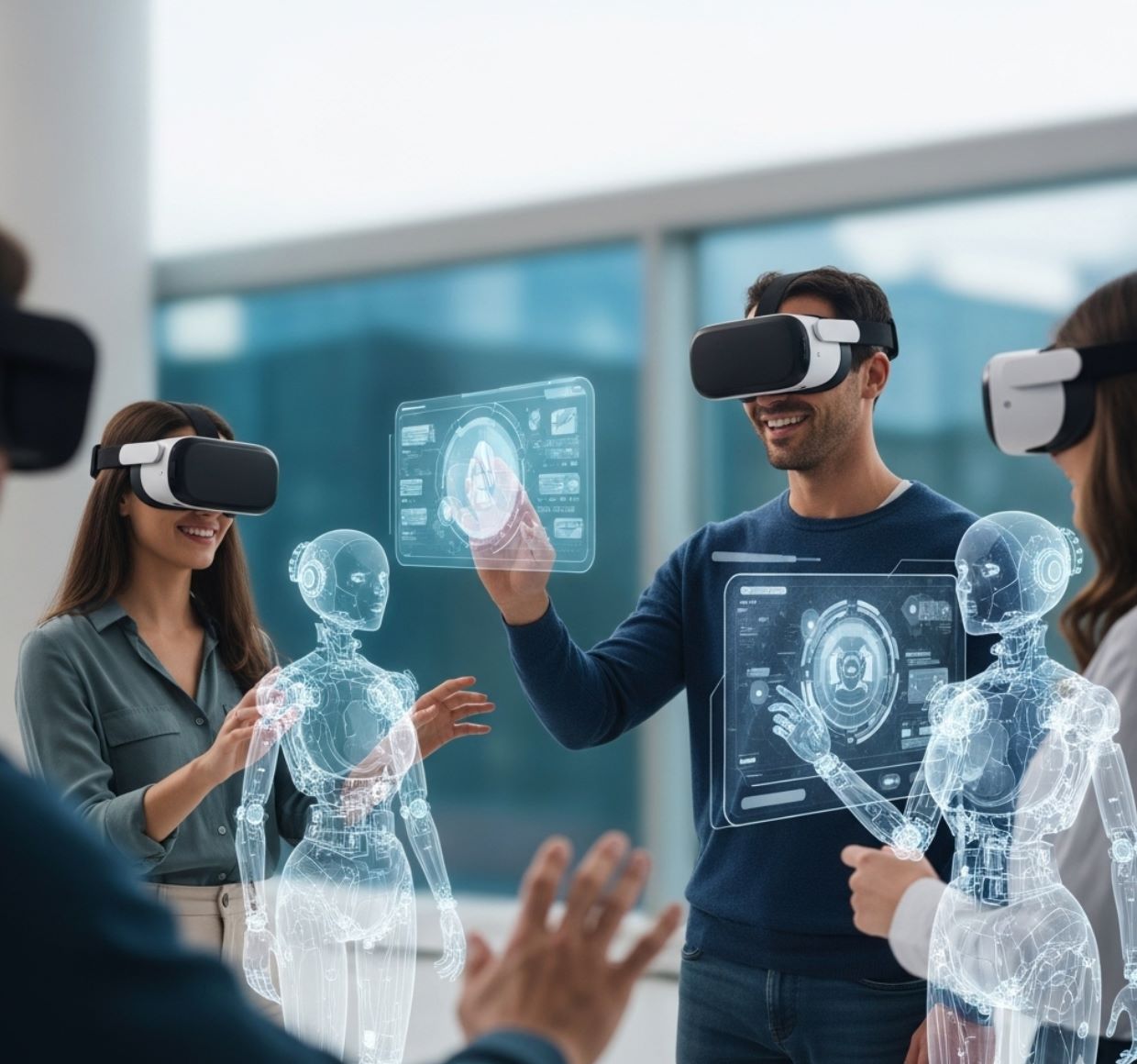
Conclusion
In conclusion, AI and the metaverse are together shaping a bold new chapter in the digital era. From hyper-realistic virtual workplaces and AI-curated entertainment to global classrooms and smart cities in cyberspace, the possibilities are immense.
It truly is a frontier brimming with potential, and we are just at the beginning of the journey.





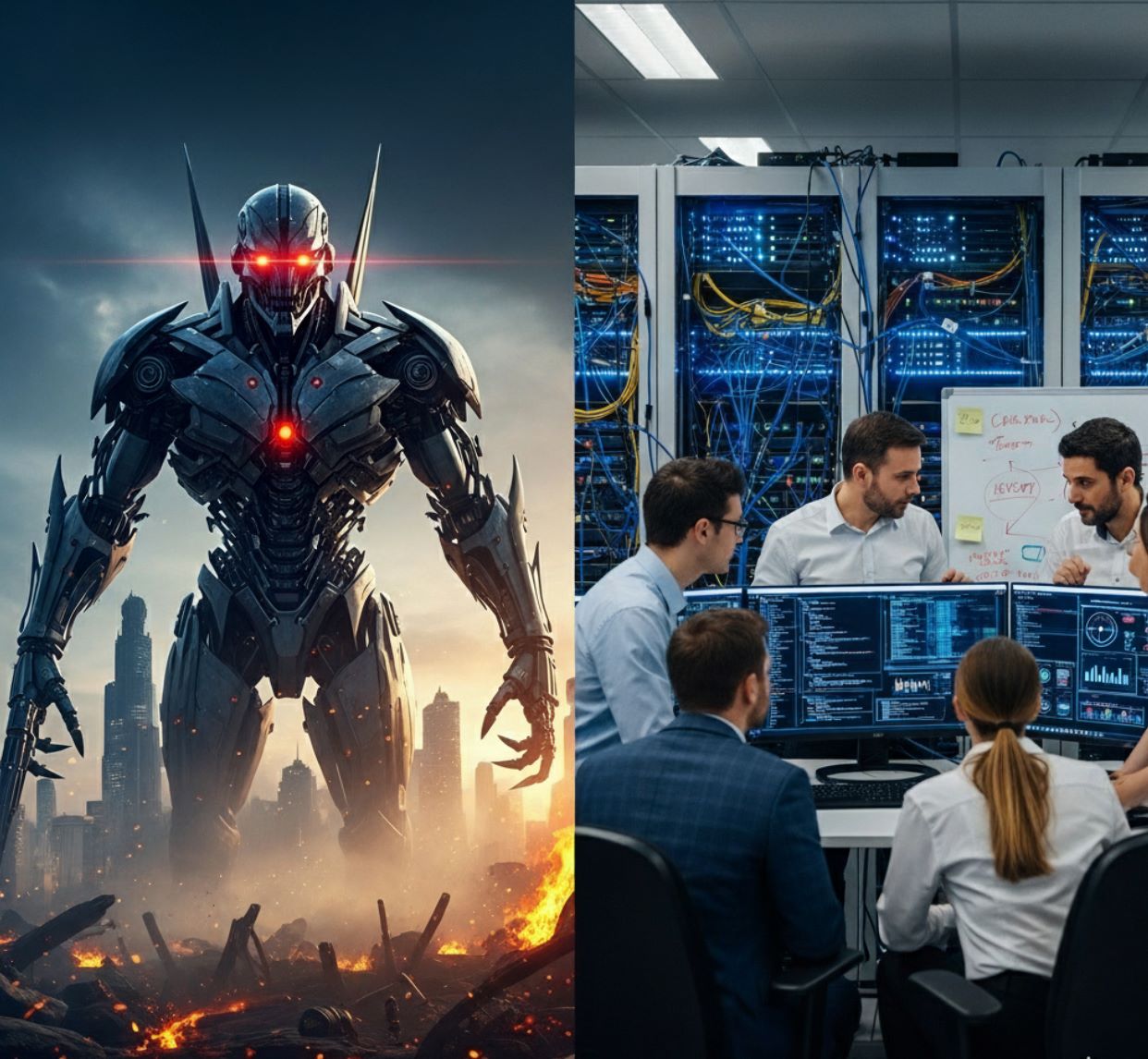
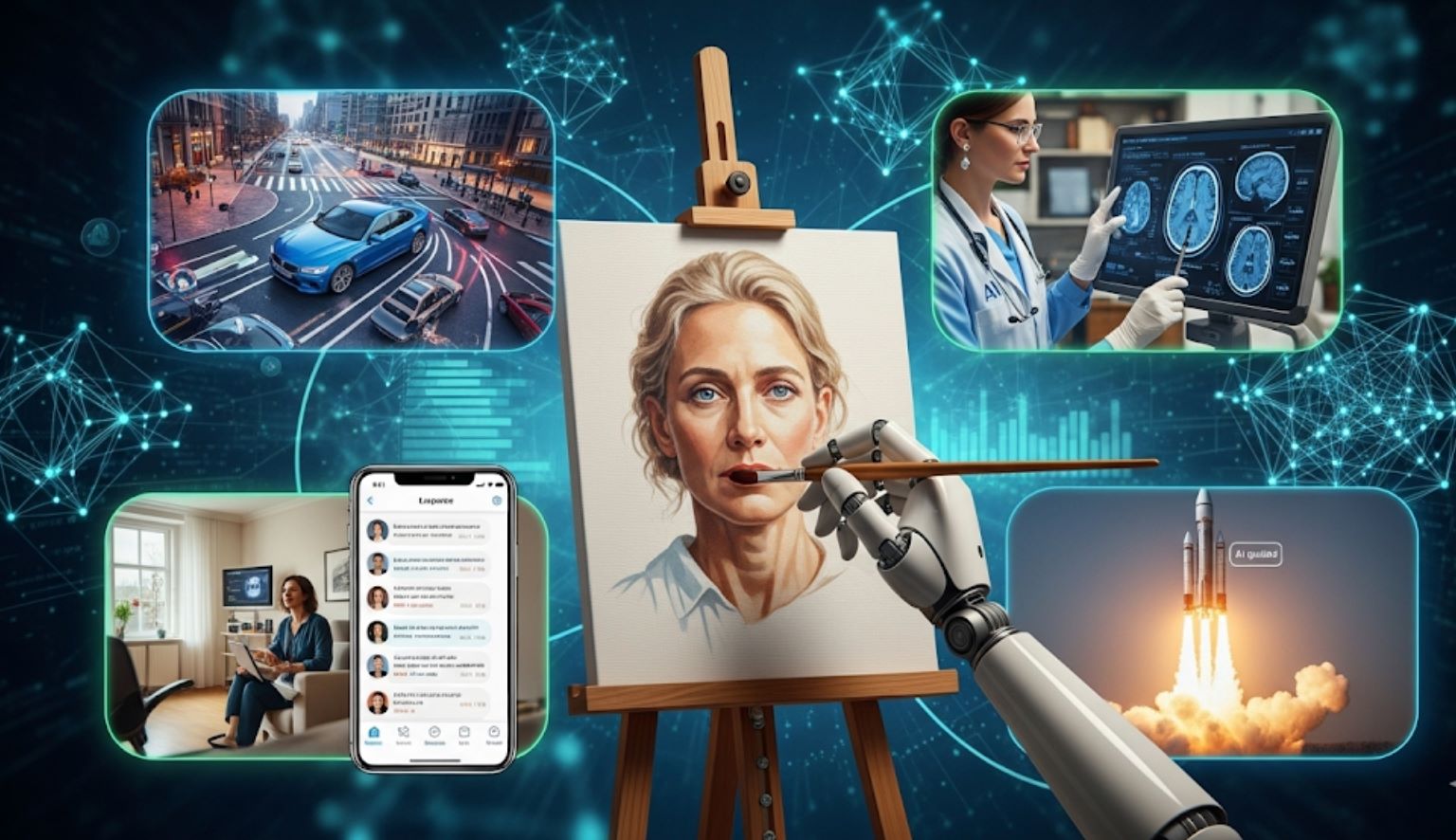
Comments 0
Leave a Comment
No comments yet. Be the first to comment!